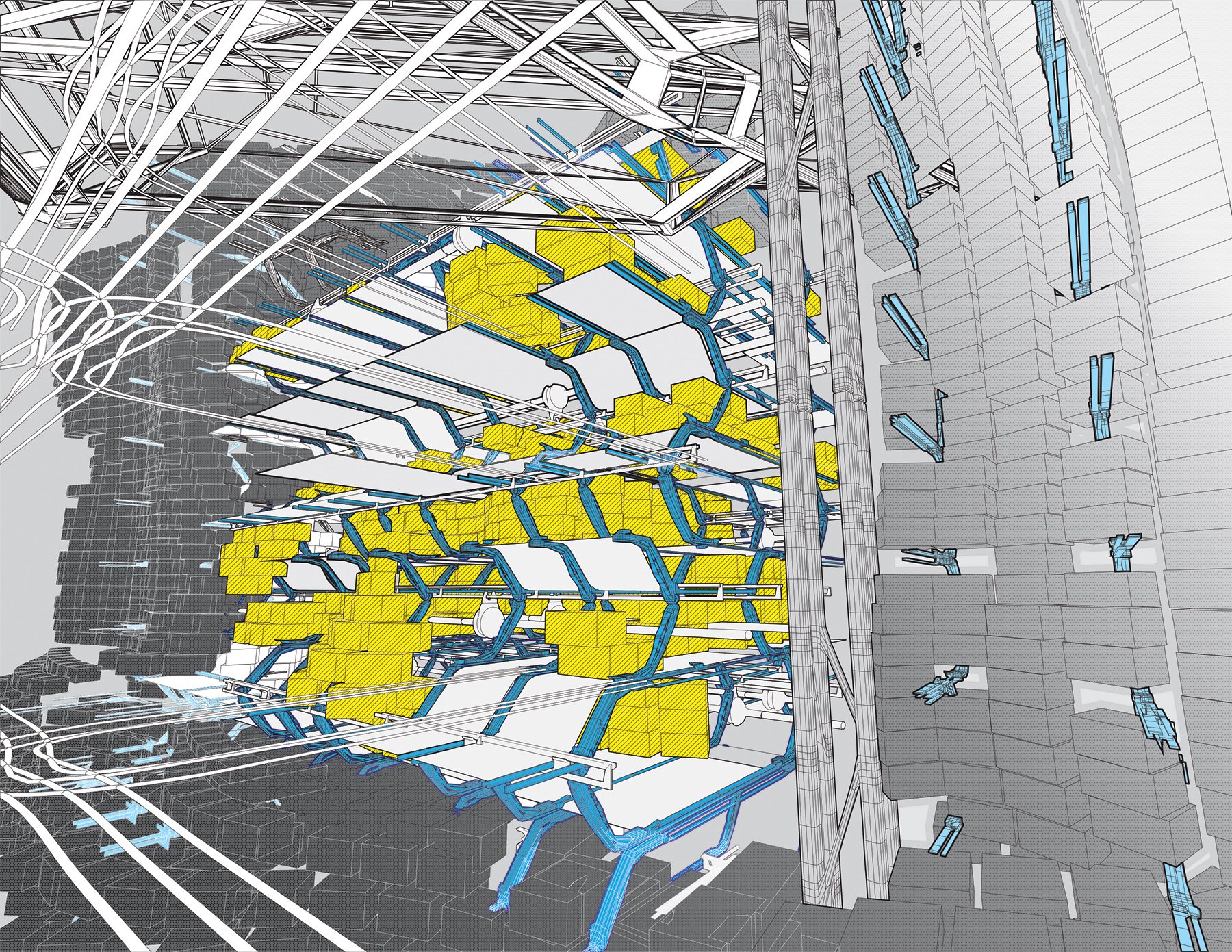LINEAR CITY MEGASTRUCTURE
2010
Leveraging post-war planning toward a utopian project is an enduring architectural tradition that includes the Parthenon in antiquity. Conceptual examples since Modernism includes the following: Le Corbusier’s Mason Dom-ino was a post-war housing proposal; the Futurists saw their visions as being viable only after the “cleansing power” of wars, and Archigram’s Walking City directly addressed radiated post-nuclear landscape.
Given Japan’s contemporary pacifist image, it’s hard to recall that its history was written in blood from its perpetual state of war. Given the possibility of another war involving Japan in the 21st century, this project leverages architecture as a cool infrastructure for a fictional post-war planning strategy in Tokyo.
What is the relationship between coolness and recovery efforts of a country? In the late 1980s, Japan’s economic bubble burst, and the ensuing decade was often referred to as the Lost Decade. Inverse to its economic decline, Japan’s cultural production, as a form of export commodity, vastly increased during that time, and they are now some of the most sought after in the world. Thereby, economist Douglas McGray coined the term “Gross Domestic Cool” to describe this phenomenon and attributed Japan’s coolness to be responsible for its reemergence as a global superpower.
This megastructure, located on Tokyo Bay, serves to resuscitate Japan’s Gross Domestic Cool. It is architecture as an instrument for a proactive cultural recovery in a devastated Japan, ravaged by a fictional war. From the smallest irreducible units, with their programmable surfaces, to the 300-meter tall structural frames, this architecture moves in all scales: both for effect and functional freedom. These movements serve to constantly renew the half-life of the atmosphere of cool.
Through intensive programming flexibility and hyperactively moving tectonic atmosphere, this proposal shelters and generates lifestyles of polite transgressions through its subversive urban landscape.
Precedents: Maison Dom-ino by Le Corbusier; Walking City by Ron Herron.














